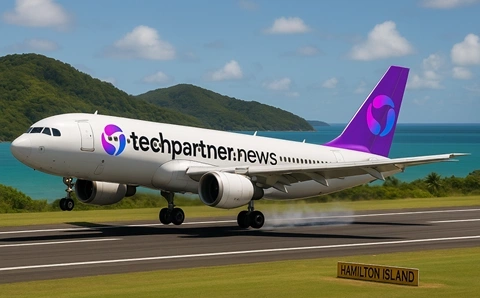Picture this scenraio. The harried IT manager of a small legal firm has set aside Thursday to reconfigure the lawyers’ email settings to another ISP that promises better rates.
But just before lunch the printer server crashes for some unknown reason – a corrupted font? This throws the office into chaos.
Contracts are stalled in the print queue, and the client is getting impatient; the unfinished email config will have to wait.
How could things be simpler?
The average Australian SME is often an awkward size – large enough to have serious IT demands, but too small to afford enough IT staff to handle them. Right now skilled IT workers are in high demand and short supply, pushing
a well-run IT centre even further out of reach.
One way to relieve pressure on an SME’s IT staff is to hand over non-critical services to a third party.
For many years, managed services were simply too expensive for anyone smaller than enterprise.But the situation has changed in pace with the improvements in technology, business practice and increased experience in the managed services sector.
All of a sudden, managed services is not a possibility for SMEs but an inevitability. The question is – who will SMEs choose to deliver it?
“The problem the mid market is facing is that they have almost the same need as the enterprise space. When you get to 250 employees you have a large client base and complex business processes,” said IDC’s Jean-Marc Annonier. “IT can help you with these issues but you don’t have much money to spend on these services.”
The operating costs of a data centre account for 80 percent of the total IT expenditure, according to IDC. The costs in time and frustration are probably at least as high again.
Monitoring and management services automate a lot of the mindless administrative chores and free up IT managers to pursue more important projects, such as improving efficiency or finding a competitive advantage through new technology.
Other services best suited to outsourcing include anything that can’t easily be done internally by SMEs, said Annonier. For example, managing emails has become increasingly complex with porn, viruses, spam and phishing attacks overloading gateways. Specialised MSPs such as the email-filtering service run by Messagelab have had a lot of success, said Annonier.
The managed services market for Australia and New Zealand is estimated at $4.3 billion a year, from enterprise to SME.
All the major vendors are looking at managed services for SMEs, from large to small, often provided by the channel. IBM in particular has done well with its Express Services series for accredited resellers.
Utility-model software services have been slow to take off, with a few exceptions such as Salesforce.com. One of the biggest hurdles is Australia’s rudimentary broadband network. Until ADSL2+, most networks were limited to 1.5Mbps by Telstra Wholesale. For some services, such low bandwidth makes it impossible to provision to companies with no more than 50 employees.
However, there is a new breed of IT services companies emerging to service the demand in the mid-market, said Annonier. These managed services providers are better adapted than the larger, enterprise-focused players which aren’t interested in chasing customers under 5000 seats, he said.
But some type of outsourcing is viable at more than 100 seats, said Annonier. And so far demand is exceeding supply.
Some MSPs are not resellers in new clothes but have delivered managed services from birth. Applaud IT was set up by former staff of the local branch of CyberNet Group, a US multinational that disappeared in a puff of smoke in 2005.
The directors of Applaud resurrected old customers and built a booming business on the back of big services contracts in a remarkably short period of time.
Its biggest clients include the gambling icon Aristocrat, for which Applaud provides in-house engineers for the help desk and data centre. Aristocrat pays a monthly fee to avoid dealing with staff overheads, sick leave and holiday leave.
The MSP also manages branch infrastructure, end-user nodes and level two and three engineer escalations for Chandler Macleod Ltd, an HR company with more than 1000 seats and 55 branches in Australia and New Zealand.
“We are very flexible in the approach we take with customers, which I think has been the key to our success,” said Applaud IT’s director Ricci Danieletto.
Applaud raked in $6 million in turnover in 2006, its second year
of operation. The internal target is $10 million for 2007. “We believe
we will exceed that,” said Danieletto.
The provider also carries out professional services and procurement, although mainly in support of its managed services, which constitute 60 percent of the firm’s revenue.
The managed services focus on non-core elements of IT infrastructure, in particular call desk support and monitoring.
Call desk support can be heavily customised; one client, a mobile phone provider, uses the company as an after-hours support for lost and stolen mobile phones.
Services are provided piecemeal. The MSP can run the help desk, look after the desktops and leave the servers to be maintained by the customer themselves.
So what do resellers need to become MSPs?
“They are going to need to refine their services and processes so they can be replicated easily for any number of clients,” said Danieletto. An MSP also needs true redundancy in every part of the operation, and business continuity plans in the case of power failure or worse.
But the most expensive and critical component is not tools or systems, but manpower.
“Our biggest overhead is people,” said Danieletto.
For resellers wanting to sell the service but not stump up the cost, Applaud on-sells its call centre to the channel and is looking for more partners to increase coverage.
“The ideal partner for us would be one that had a requirement for our services but lacked the resources, quantity of managed services business or the desire to enter this arena completely, and there did not exist any conflict between them and us,” said Danieletto.
Some of Applaud’s biggest partners are tier-one vendors for which it provides help desk and level two support. The vendors use Applaud to cover clients they consider too small, such as anything below 400 seats.
Danieletto said he believes MSPs in the enterprise level, already in a period of consolidation, will one day begin to sell lower into the SME space. Until then, there are plenty of opportunities for resellers “before the sleeping giants wake up.”
A cheaper way
There are other, cheaper approaches to building your own call centre that offer entry points to managed services for both resellers and their customers.
Resellers casting around for an easy way in could look up Kaseya. The US software maker started out in 2003 and arrived in Australia this March to sell shovels for the managed services goldmine.
Kaseya’s application monitors a network by planting lightweight agents in each machine on a customer’s site which then report back to a web-based browser.
The software is designed to be quick and easy to deploy and is network agnostic, which makes it easy to look after disparate, complicated networks.
Kaseya automates defragging of machines on a network, patch management, software and anti-virus deployment, disaster recovery and monitoring. The ability to monitor and diagnose alerts remotely and automate mundane chores brings big savings to resellers that spend many hours on-site.
Instead of pricing services on a time and materials basis, the reseller can charge a recurring monthly fee. The customisable interface appears on a customer’s desktop as the reseller’s logo – click on the logo and a ticket is raised automatically with the reseller.
In theory, managed services mean fewer site visits. Many administrative issues that arise daily in a data centre can be addressed remotely by the reseller, saving time and manpower. But one problem facing resellers that change to managed services is that their customers, who never see this activity, can wonder what they are paying for.
Kaseya and other services software provide customisable reports that list the number of machines defragged, patches sent, backups recorded, anti-virus updated and tickets answered.
Emailing a report each week to the customer provides justification for the ongoing monthly fee, said Tim Dickinson, country manager, Australia and New Zealand.
The software’s key differentiators to its competitors are the quality of the product and the payment program, said Dickinson.
Resellers can choose to pay over an 18-60 month period, depending on licence.
A 100-seat licence costs $1500 plus 18 monthly payments of $650, while a 5000-seat licence costs $7500 plus 60 monthly payments of $3541. The latter arrangement breaks down to 73 cents a seat a month, according to Dickinson.
“The key thing for system integrators moving into managed services in the SME is that you have to have a solution which is low cost, because an SME with 10-15 PCs is very price sensitive,” said Dickinson.
The software scales by buying more licences; the largest customer in the UK delivers services to 50,000 seats.
Kaseya has been growing quickly and already has 1000 partners around the world, said Dickinson.
There are already 80 customers in Australia holding licences for an average 1000 seats, and Kaseya is adding 20-25 partners a quarter,
said Dickinson.
The average Kaseya customer is an ambitious systems integrator looking to expand beyond a staff of five to 20 who currently monitor 1000 to 1500 machines. Managed services are a much more profitable and sensible way to expand than adding staff, said Dickinson.
Carrier attack
But are resellers best placed to deliver managed services? James Wilson, director of carrier partner group, APAC, Juniper Networks, doesn’t think so.
The companies able to deliver the greatest economies of scale are those with the most customers – the carriers, which are a central part of Juniper’s enterprise market strategy.
Wilson acknowledges that SMEs are risk averse and therefore inclined to listen to their ‘trusted adviser’ reseller. But he said only a carrier can fulfil a service-level agreement to the letter and on time, even if an integrator were to offer a completly identical agreement.
In the event of a complaint, “there’s a better guarantee of resolution with a bigger brand” that can’t just walk away from a customer, said Wilson.
Another factor is the ability to scale to thousands of customers. How many integrators can provide post-sales support to Australia’s one million SMEs?, asks Wilson.
If carriers haven’t taken the lead on managed services in the past, it is because they have lacked the skills. This deficiency has now been rectified, said Wilson. But “the delivery capability has always been there.”
Wilson predicts that no less than 60 percent of managed services, including routing, security, acceleration, access control and remote control, will be served by carriers by 2010. The only foreseeable hitch in his plan is if a vendor such as HP or IBM picks a battlefront and makes a stand.
One carrier, Brennan IT, has made managed services the mainstay of its business. This division accounts for 60 percent of revenue and is growing, said managing director David Stevens. The telco has just added managed VoIP to its portfolio and is eager to add more ASAP.
“We’ve got a list as long as our arm as to what we want to deliver. I believe it is the way of the future,” said Stevens.
An indicator of managed services’ acceptance is the length of contract terms, which are expanding and increasing revenue, said Stevens.
Unsurprisingly, Stevens agrees with Juniper’s Wilson on the best choice for a partner. “Telcos are best placed to provide the one-stop business.” The “one throat to choke” single-sourcing model plays a big part in the selection process, said Stevens.
Customers looking for their second managed services provider are particularly keen to sign up one supplier for network connectivity, voice and data so as to avoid the Mexican stand-off between provider and ISP when a problem does arise, added Stevens.
And yet Telstra and Optus will not be take-all winners because their size works against them, said Stevens.
“It’s too much of a David and Goliath for a 100-seat firm to feel they have a close relationship with Telstra and Optus.”
A call centre in three countriesSun has arrived to the SME managed services market late in the fray, but is promising to put up a good fight.
The acquisition of SevenSpace in 2005 took some time to digest, and its monitoring and management services have been available in Australia since last November.
Sun said there are pilots operating but has nothing to report from its Australian experience after six months – but this is not due to any operational hiccoughs, assures Brad Perriott, Sun Services product manager, Australia and New Zealand.
Sun uses three operation centres in the US, Lithgow (Scotland) and Bangalore (India) to provide around-the-clock coverage. Around 95 percent of alerts can be diagnosed and addressed remotely, said Perriott, which greatly reduces the amount of time on-site and boosts up-time.
The network monitoring centre works across heterogenous environments, not just Sun gear, and is branded by resellers as their own. The monitoring centre saves channel partners from having to outlay the resources themselves and the remote management and monitoring can be bundled in with other managed services sold by Sun resellers.
The network centre fills a gap in the market, said Perriott. SMEs are usually unable to afford full 24/7 support used by enterprise, instead settling for a two- to four-hour response time after business hours.
A customer or reseller can watch a network by logging into a point-control through a web-based virtual interface that displays alerts and fixes in real time.
If the point control goes down, the customer is eligible for a refund.
The Sun monitoring centre acts as a single point of contact for all IT issues, even for those relating to competitive hardware.
In the case of failure, the Sun help desk calls the relevant vendor on behalf of the customer to organise a replacement or fix.
And Sun then alerts its own sales team to rush in with a pitch? Perriott isn’t sure.
For all their obvious benefits, managed services can be surprisingly difficult to sell. Belief in the provider to deliver does not come automatically. And sometimes an SME’s IT manager is afraid that managed services will manage him out of a job.
IT managers are sometimes reluctant to hand over the keys to the data centre because a remote monitoring service would mean less staff are required in-house. Less staff equals a smaller budget and less power within the organisation – a difficult prospect for those whose personal ambitions outweigh the needs of the business.
“We have some [IT] employees worried that [managed services] is a job threat. It’s not,” said Perriott.
Monitoring and management services remove the drudgery from IT – change management, config and asset management, service request management, incident management. Instead of being tied up with mundane, quotidian chores, an IT manager can explore technology options that give a company competitive advantage or cost savings, said Perriott.
There is little doubt the lone IT manager who troubleshoots admin issues is no longer the most efficient way to run a business when compared to the economies of scale, professional expertise and round-the-clock monitoring of an MSP.
Nowadays, an SME is more likely to find the right service for the right price.
“An army of IP is more effective at solving problems with the data centre than just a lone soldier,” added Perriott.
The Services Super-Sell
By
Sholto Macpherson
on Jun 20, 2007 12:31PM

Got a news tip for our journalists? Share it with us anonymously here.
Partner Content
_(11).jpg&h=142&w=230&c=1&s=1)
The Compliance Dilemma for Technology Partners: Risk, Revenue, and Reputation

Shure Microsoft Certified Audio for Teams Rooms

Tech Data: Driving partner success in a digital-first economy

Promoted Content
From Insight to Opportunity: How SMB Service Demand is Shaping the Next Growth Wave for Partners

Tech Buying Budgets for SMBs on the Rise






.jpg&w=100&c=1&s=0)
_(8).jpg&w=100&c=1&s=0)









